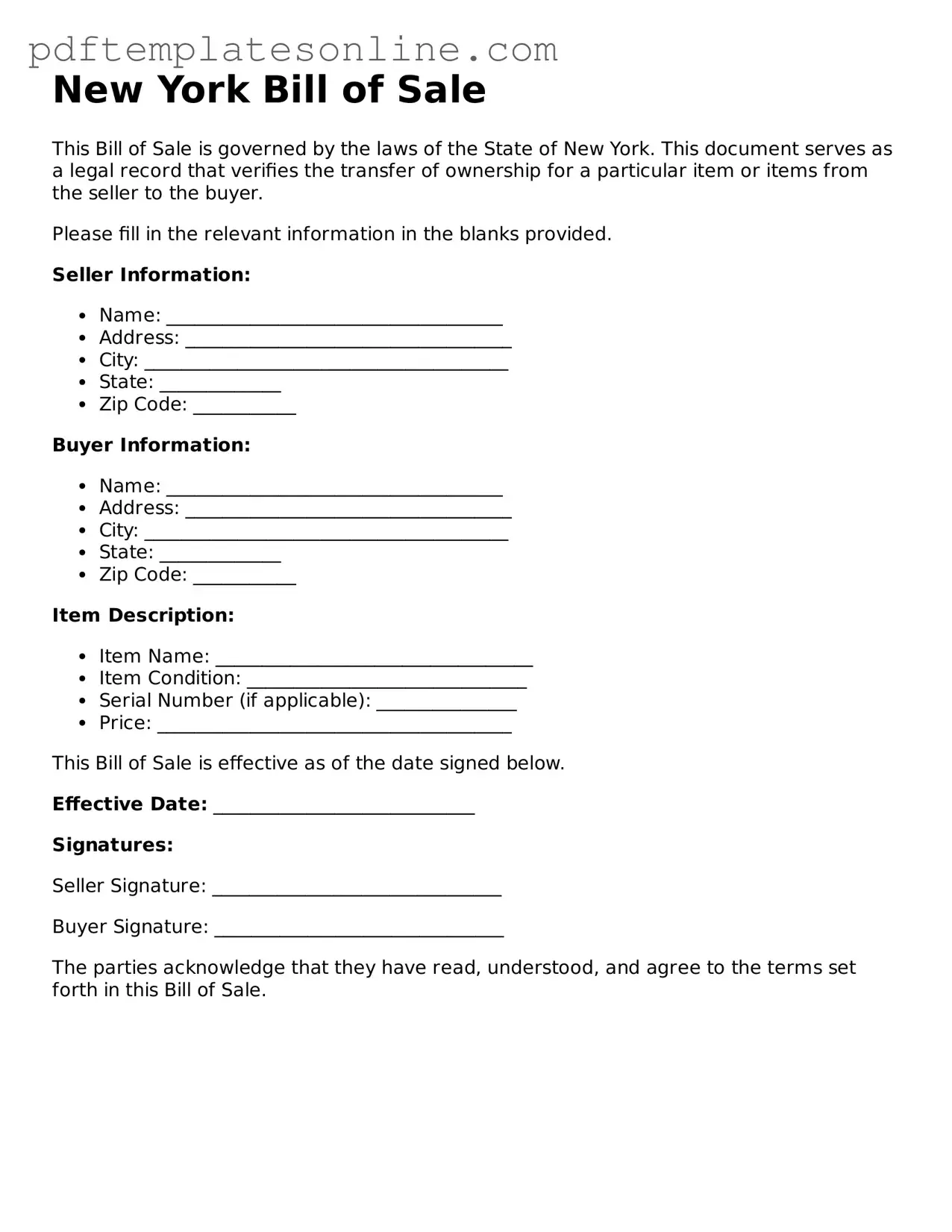Official New York Bill of Sale Document
A Bill of Sale is a legal document that transfers ownership of personal property from one person to another. In New York, this form is essential for recording the sale of items such as vehicles, furniture, or equipment. Understanding how to properly complete and use this form can help ensure a smooth transaction.
Access Bill of Sale Editor Now
